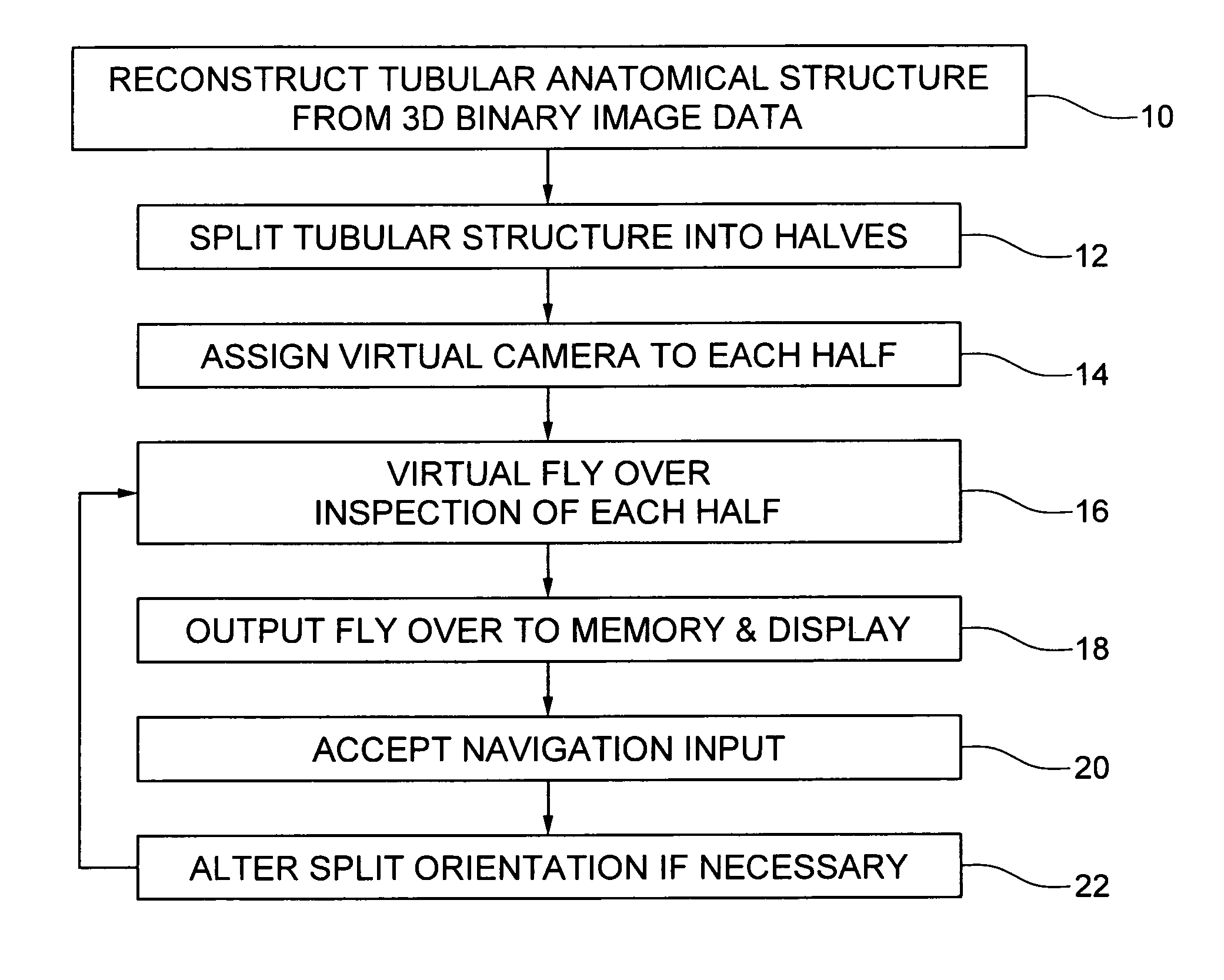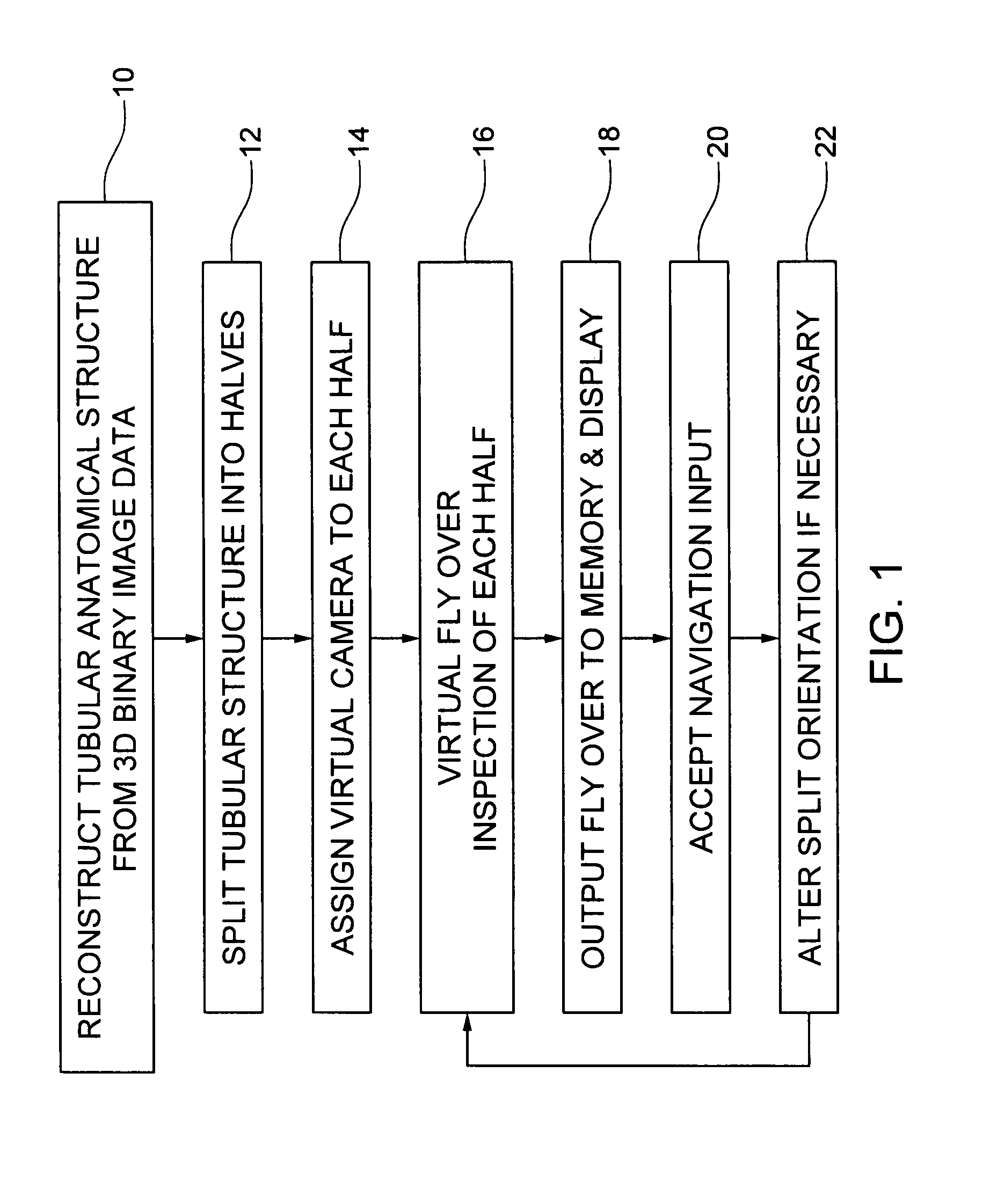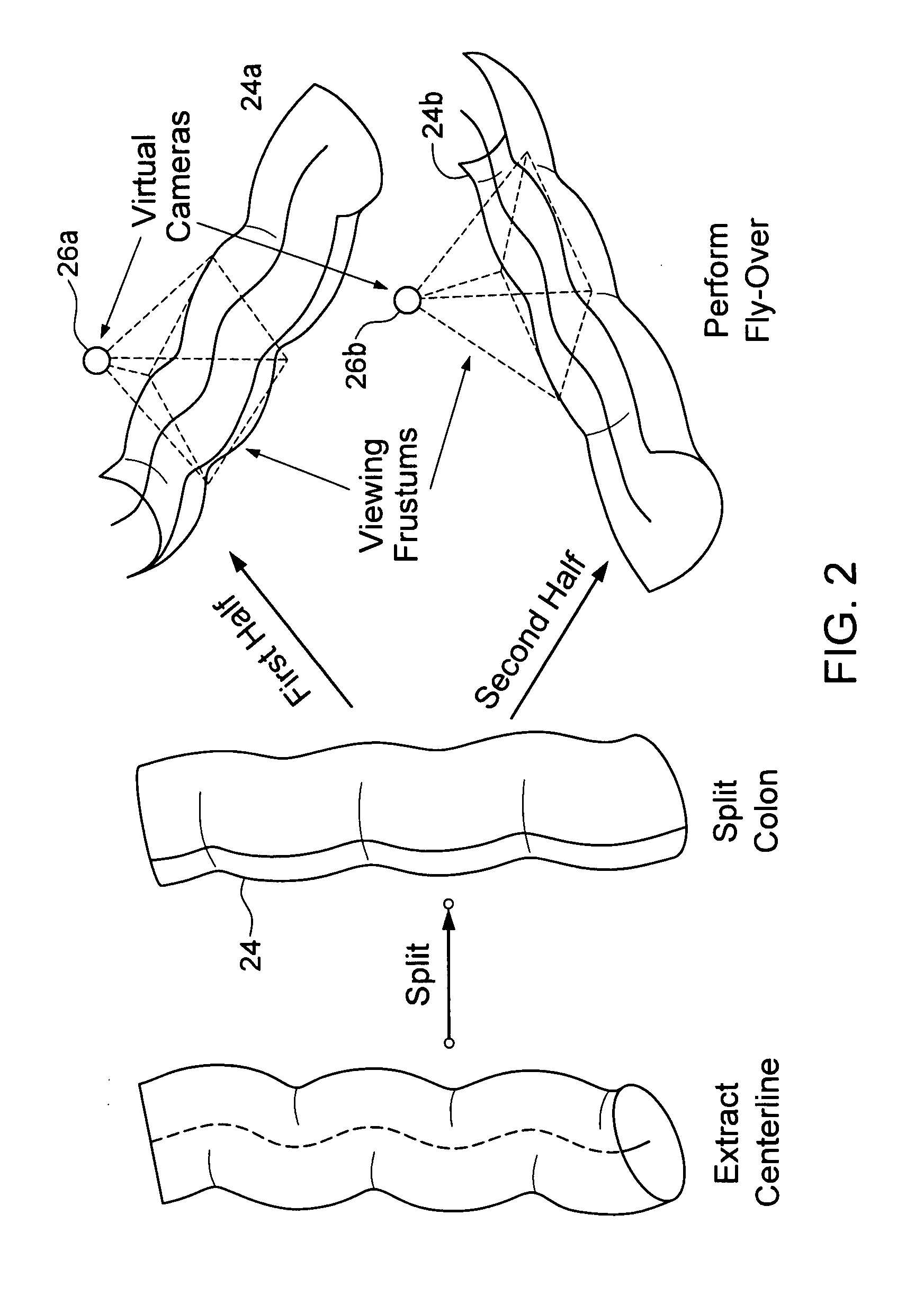Virtual fly over of complex tubular anatomical structures
a tubular anatomical and virtual technology, applied in the field of medical imaging, can solve the problems of insufficient examination, time-consuming, and lower surface visibility coverag
- Summary
- Abstract
- Description
- Claims
- Application Information
AI Technical Summary
Benefits of technology
Problems solved by technology
Method used
Image
Examples
Embodiment Construction
[0013] An embodiment of the invention is method, which can be implemented in software, firmware, hardware, etc., for virtual fly over inspection of complex anatomical tubular structures. In a preferred embodiment, the method is implemented in software, and the software reconstructs the tubular anatomical structure from a binary imaging data that is originally acquired from computer aided tomography scan or comparable biological imaging system. The software of the invention splits the entire tubular anatomy into exactly two halves. The software assigns a virtual camera to each half to perform fly-over navigation. Through controlling the elevation of the virtual camera, there is no restriction on its field of view (FOV) angle, which can be greater than 90 degrees, for example. The camera viewing volume is perpendicular to each half of the tubular anatomical structure, so potential structures of interest, e.g., polyps hidden behind haustral folds in a colon are easily found. The orient...
PUM
 Login to View More
Login to View More Abstract
Description
Claims
Application Information
 Login to View More
Login to View More - R&D
- Intellectual Property
- Life Sciences
- Materials
- Tech Scout
- Unparalleled Data Quality
- Higher Quality Content
- 60% Fewer Hallucinations
Browse by: Latest US Patents, China's latest patents, Technical Efficacy Thesaurus, Application Domain, Technology Topic, Popular Technical Reports.
© 2025 PatSnap. All rights reserved.Legal|Privacy policy|Modern Slavery Act Transparency Statement|Sitemap|About US| Contact US: help@patsnap.com



